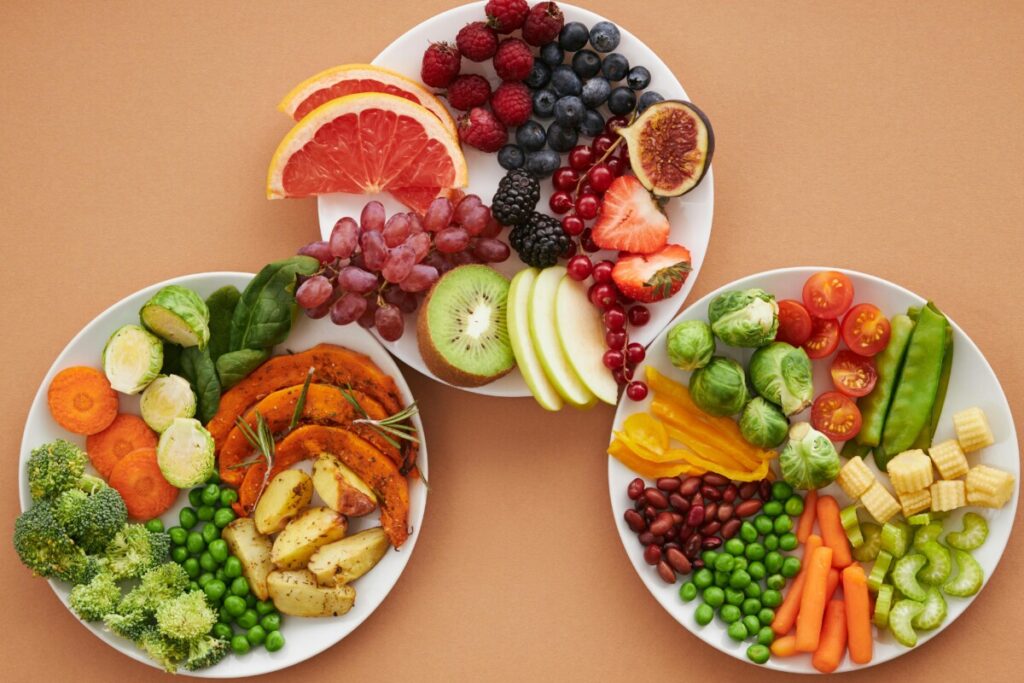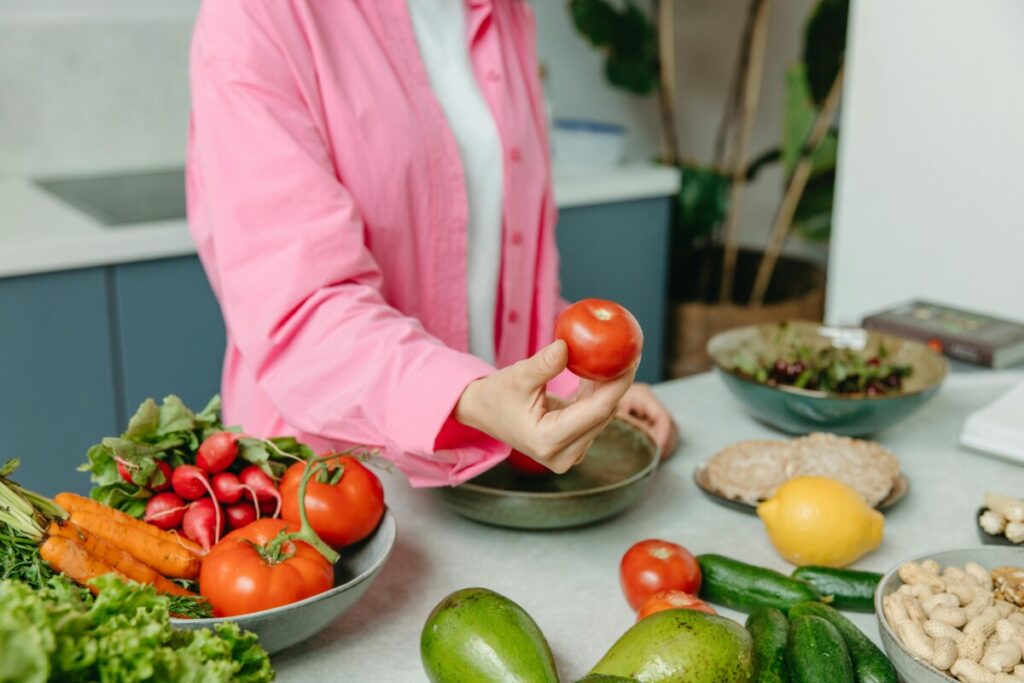“5 Simple Ways to Cutting Sugar from Your Diet”

Welcome to our blog! If you’re looking to reduce your sugar intake and improve your health, then you’ve come to the right place. We’re here to help you make changes in your diet, and today I’ll be focusing on five simple ways to cut sugar from your diet. From understanding portion sizes to replacing sugary snacks with healthier alternatives, get ready to make some positive changes in your lifestyle and take charge of your health. Let’s take a look at five simple ways to reduce your sugar intake and enjoy a healthier diet.
Understand the Types of Sugar
Differentiating between natural and added sugars
When it comes to cutting sugar from your diet, it’s important to understand the different types of sugars that exist. Not all sugars are created equal, and being able to differentiate between natural and added sugars can help you make informed choices.
Here are some key points to keep in mind:
Natural sugars: These sugars occur naturally in foods such as fruits, vegetables, and dairy products. While they still contribute to your overall sugar intake, they also come with important nutrients and fiber that can benefit your health. It’s generally recommended to prioritize these natural sugars over added sugars.
Added sugars: These sugars are added to food and drinks during processing or preparation. They provide excess calories without any additional nutritional value. Added sugars can be found in a wide range of products, including sodas, cookies, candies, and processed snacks. It’s important to limit your intake of added sugars as much as possible.
By understanding the types of sugars and being mindful of where they come from, you can take steps towards cutting back on your overall sugar consumption and making healthier choices for your diet.
Read Food Labels
Identifying hidden sources of sugar in packaged foods
When trying to reduce your sugar intake, one of the most important things you can do is to start reading food labels. Many packaged foods contain hidden sources of sugar that may not be immediately apparent. By carefully reading food labels, you can identify these hidden sugars and make more informed choices.
Here are some tips for reading food labels to cut sugar from your diet:
Check the ingredients list: Look for sugar or its various forms, such as high fructose corn syrup, maltose, dextrose, and sucrose. The higher up in the list, the more sugar the product contains.
Look for added sugars: Many foods, such as cereals, granola bars, and flavored yogurts, have added sugars. Aim for products with little to no added sugars or choose those with natural sweeteners like stevia or monk fruit extract.
Be aware of sugar aliases: Manufacturers often use different names for sugar to make it harder to spot. Some common aliases include molasses, agave nectar, honey, fruit juice concentrate, and barley malt.
Check the serving size: Pay attention to the serving size listed on the label. Sometimes a product may seem low in sugar, but if you consume more than one serving, the sugar content can quickly add up.
Compare different brands: When shopping for packaged foods, compare different brands to find those with lower sugar content. Use the nutritional information panel to compare the grams of sugar per serving.
By taking the time to read food labels, you can become more conscious of the hidden sugars in your diet and make healthier choices. For more information on sugar and its impact on health, check out this Wikipedia article.
Opt for Natural Sweeteners
Exploring healthier alternatives to refined sugar
Cutting down on sugar doesn’t mean giving up on sweetness altogether. There are several natural sweeteners that can be used as alternatives to refined sugar. These sweeteners provide a similar taste while offering additional health benefits.
Here are some healthier alternatives to consider:
1. Stevia: Stevia is a plant-based sweetener that is much sweeter than sugar. It has zero calories and does not raise blood sugar levels, making it a suitable option for those with diabetes or on a low-calorie diet.
2. Honey: Honey is a natural sweetener that contains antioxidants and has antibacterial properties. It is best to choose raw and unprocessed honey for maximum health benefits.
3. Maple Syrup: Maple syrup is made from the sap of maple trees and is a great source of antioxidants and minerals like zinc and manganese. However, it is still high in sugar, so it should be consumed in moderation.
4. Coconut Sugar: Coconut sugar is derived from the sap of coconut palm trees. It has a lower glycemic index than regular sugar, meaning it causes a smaller spike in blood sugar levels.
5. Fruit: Using fruit, such as mashed bananas, applesauce, or dates, can add natural sweetness to baked goods without the need for added sugars.
By choosing natural sweeteners, you can reduce your intake of refined sugar while still enjoying delicious flavors. Remember to use them in moderation and consult with a healthcare professional if you have any specific dietary concerns.
Reduce Sugar in Beverages
Tips for cutting back on sugary drinks and smoothies
Choose Water: Opt for water instead of sugary beverages like sodas, energy drinks, or sweetened teas. Water is a healthier and calorie-free option that will keep you hydrated throughout the day.
Try Unsweetened Drinks: If you crave flavor, try unsweetened versions of your favorite drinks such as unsweetened iced tea or coffee. You can also experiment with adding natural flavors like lemon or mint to enhance the taste.
Read Labels: Be sure to read the labels on beverage products to check for hidden sugars. Look out for terms like high fructose corn syrup, sucrose, and fructose, which are all forms of added sugars.
Make Your Own Smoothies: Instead of buying pre-packaged smoothies that are often loaded with sugars, make your own at home. Use fresh fruits, vegetables, and unsweetened dairy alternatives, along with a little bit of honey or maple syrup for sweetness.
Gradually Reduce Sugar: If you can’t completely cut out sugary drinks, start by gradually reducing the amount of sugar you add. Over time, your taste buds will adjust, and you’ll find that you don’t need as much sugar to enjoy your beverages.
Choose Whole Foods
Emphasizing whole fruits and vegetables over processed snacks
One of the simplest and most effective ways to cut sugar from your diet is by choosing whole foods over processed snacks. Whole foods, such as fruits and vegetables, are naturally low in sugar and provide essential nutrients for your body.
Here are some tips on how to incorporate more whole foods into your diet:
Fill half your plate with fruits and vegetables: Aim to have a variety of colorful fruits and vegetables with each meal. This will not only provide you with essential vitamins and minerals but also increase your fiber intake.
Snack on whole fruits: Instead of reaching for sugary snacks like candy or cookies, opt for whole fruits like apples, berries, or oranges. They are naturally sweet and packed with fiber, which helps slow down the absorption of sugar into your bloodstream.
Choose whole grains: When selecting grains, opt for whole grains like brown rice, quinoa, or whole wheat bread. These contain more fiber and nutrients compared to their refined counterparts.
Cook homemade meals: Cooking meals at home allows you to have full control over the ingredients you use. You can replace processed sauces and condiments with homemade options using fresh ingredients.
Be mindful of beverages: Many beverages, including sodas, fruit juices, and energy drinks, contain high amounts of added sugar. Opt for water, unsweetened tea, or infused water with fresh fruits like lemon or cucumber.
By emphasizing whole foods in your diet, you can reduce your sugar intake and improve your overall health. For more information on the benefits of whole foods, you can visit here.
Minimize Processed Foods
The importance of cooking from scratch
One of the most effective ways to cut sugar from your diet is to minimize your consumption of processed foods. Processed foods often contain added sugars, as well as other unhealthy ingredients. By cooking from scratch, you have control over the ingredients and can ensure that you’re not adding unnecessary sugars to your meals. Cooking from scratch allows you to choose whole, unprocessed ingredients and create healthier, sugar-free alternatives to your favorite dishes. It may take some time and effort, but the benefits to your health are well worth it. By minimizing your reliance on processed foods and cooking from scratch, you can effectively reduce your sugar intake and improve your overall well-being.
Manage Cravings
Strategies to curb sugar cravings and maintain a balanced diet
Reducing sugar intake can be challenging, especially when cravings strike.
Here are some simple strategies to help manage cravings and maintain a balanced diet:
1. Opt for whole foods: Choose whole foods that are naturally sweet, such as fruits, to satisfy your sweet tooth without resorting to sugary snacks.
2. Stay hydrated: Sometimes, dehydration can be mistaken for hunger or sugar cravings. Keep a water bottle handy and sip on it throughout the day to stay hydrated.
3. Get enough sleep: Lack of sleep can increase cravings for sugary foods. Aim for 7-9 hours of quality sleep each night to support a balanced diet.
4. Eat protein and fiber: Including protein and fiber-rich foods in your meals can help keep you feeling satisfied and reduce cravings for sugary snacks.
5. Find healthy alternatives: Look for healthier alternatives to satisfy your cravings, such as dark chocolate, unsweetened yogurt, or homemade snacks sweetened with natural ingredients like honey or maple syrup.
Practice Portion Control
Controlling sugar intake by limiting portion sizes
One effective way to cut sugar from your diet is to practice portion control. By being mindful of the amount of food you consume, you can reduce your overall sugar intake.
Here are some tips to help you control your portion sizes and cut down on sugar:
Use smaller plates and bowls to trick your mind into thinking you’re eating more than you actually are.
Measure your food servings using measuring cups or a food scale to ensure you’re not consuming excessive amounts of sweetened foods.
Eat slowly and savor each bite, allowing your body to register feelings of fullness and satisfaction.
Fill up on nutrient-dense, low-sugar foods like vegetables and lean proteins to help you feel satiated without relying on sugary snacks.
Be mindful of portion sizes when dining out or ordering takeout, as restaurant meals often come in larger servings that can be high in sugar.
By practicing portion control, you can make significant progress in cutting sugar from your diet and promoting a healthier lifestyle overall.
Create Healthy Habits
Building sustainable routines for long-term sugar reduction
Creating healthy habits is essential for long-term sugar reduction. By establishing sustainable routines, you can gradually decrease your sugar intake and improve your overall well-being. Start by being mindful of the amount of sugar in your diet and try to make healthier food choices. Incorporating more fruits and vegetables into your meals can provide essential nutrients and naturally satisfy your sweet cravings. Additionally, opt for whole foods instead of processed ones, as they often contain hidden sugars. It’s also important to read food labels carefully and choose products with lower added sugar content. Making small, gradual changes and being consistent with your healthy habits will lead to significant improvements in your health and reduce your reliance on sugar.
Conclusion
Summary of key steps to reduce sugar consumption
Cutting down on sugar can have numerous benefits for your overall health and well-being.
Here are five simple steps you can take to reduce your sugar intake:
Read food labels: Pay attention to the ingredient list and look for hidden sugars like high-fructose corn syrup, maltose, or sucrose. Choose products with little to no added sugars.
Avoid sugary beverages: Swap sugary drinks like soda, sweetened tea, and energy drinks for water, unsweetened tea, or infused water with fruits or herbs.
Choose whole foods: Opt for whole fruits, vegetables, lean proteins, and whole grains over processed foods and snacks that tend to be high in added sugars.
Plan your meals: Prepare meals and snacks in advance to avoid reaching for sugary options when hunger strikes.
Find healthier alternatives: Experiment with natural sweeteners like stevia, honey, or maple syrup instead of refined sugar. Also, satisfy your sweet tooth with fresh fruits or homemade treats using healthier ingredients.
By incorporating these simple steps into your daily routine, you can significantly reduce your sugar consumption and enjoy the benefits of a healthier diet. Remember, moderation is key, and small changes can lead to long-term success. Thank you for reading today’s blog post.








